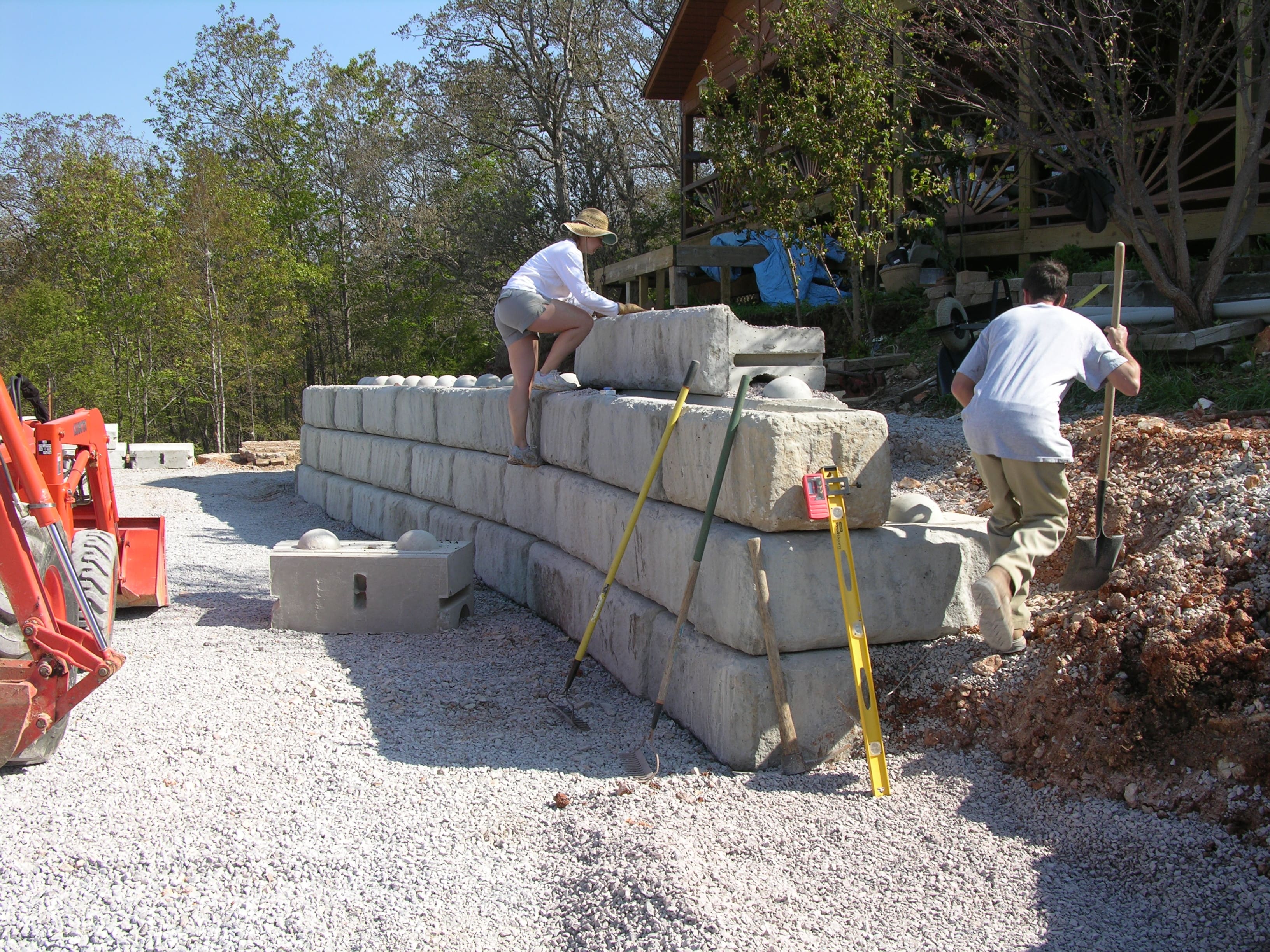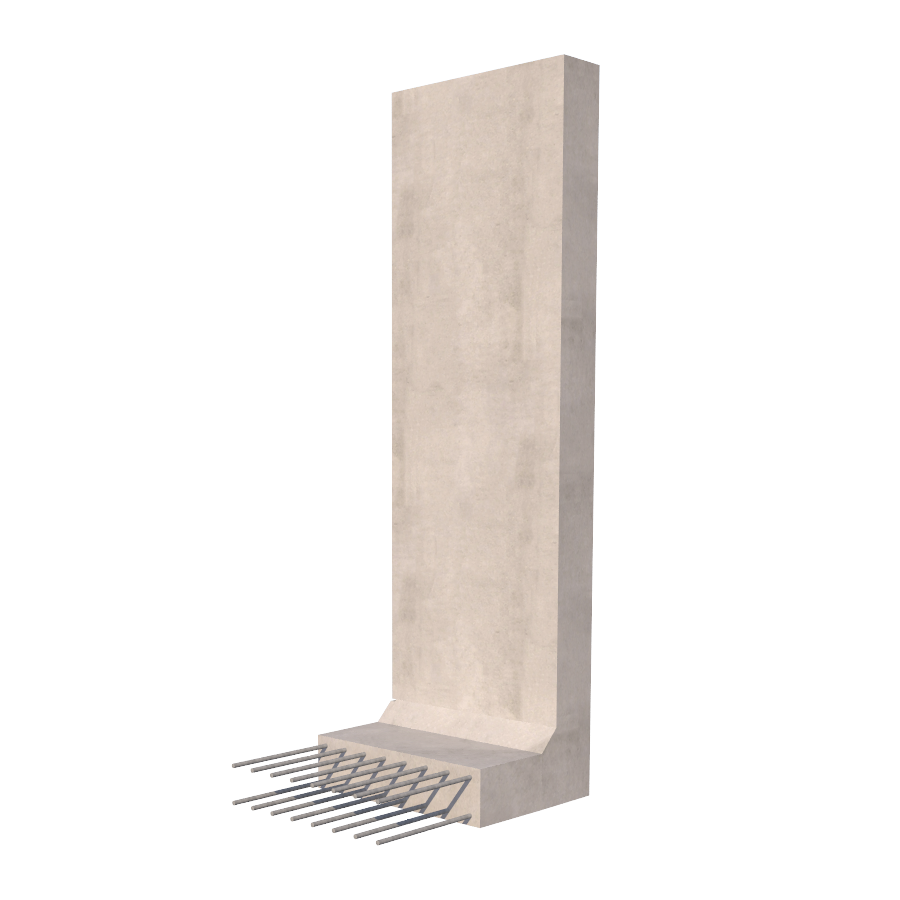Table Of Content

With the full retaining wall design software, a PDF design report can be generated to show the detailed calculations steps and references followed to achieve the results. Thickness of a retaining wall depends entirely on the planned purpose and location of your retaining wall. The idea is to create a wall with sufficient wall thickness to tolerate the allowable soil bearing pressure behind it, without the retaining wall design being too thick, which wastes money and time.
Adding Loads
ASCE 7, "Minimum Design Loads for Buildings and Other Structures," provides provisions for calculating loads on structures, including retaining walls. ASCE 7-16 is the latest version and is widely adopted in the industry. Replace native soil with 3/4-minus gravel (no stones under 3/4 inch in diameter) or “bank-run” gravel (washed stones 1/4 inch to 6 inches in diameter). Shovel at least a 4-inch layer of gravel onto the landscape fabric.
Comparison of Rubble and Concrete Retaining Walls
The full version of SkyCiv Retaining Wall also allows users to print a final detailed report of all their calculations to accompany their results. Next, define the properties for Soil Type, Name, Color, Texture, Friction Angle, and Unit Weight of you chosen materials. After these have been defined, you can set the material for the Active, Passive, and Substructure zones. Get in touch with us today to schedule an estimate for your new retaining wall. In this case, if the factor of safety is too low, the option is to lengthen the base for the pressure to distribute better.
What is the design process for designing a structural retaining wall?
Install the soil nails at the specified spacing and length, ensuring proper bonding with the surrounding soil. Enhance your workflows with access to the world's most trusted engineering codes and standards. For the thickness of the wall to be safe in shear, the ultimate shear, Vu should less than the allowable shear, Vallow as recommended by the ACI 318 code.
Free Retaining Wall Calculator
A retaining wall is a structure that is designed to hold soil behind it. Retaining walls are frequently used to transform uneven or hilly ground and create more flat, usable land. This also helps to protect your landscaping from soil erosion and ground collapse. A common application is a retaining wall planter, which surrounds the perimeter of a house or fence and creates a raised, protected environment for your plants.
That’s because most residential retaining walls have poor drainage, and many aren’t built to handle the hillside they’re supposed to hold back. DiBara Masonry designs and builds retaining walls in Los Angeles and surrounding areas of Southern California. Geotechnical engineering designs such as foundation analysis, design, and construction, design of retaining structures, soil investigations, soil, etc. are discussed with worked examples. Another article describes in detail these stability requirements and the stability checks of any retaining wall can be performed using SkyCiv’s Retaining Wall Calculator Software. After you’ve modeled your stem wall shape, soil zones, and material conditions you are ready to add loads. The loading sign convention for SkyCiv Retaining Wall is (-) negative for downward gravity pressure loads and (+) for uplift pressures.
Lake Forest Park neighbors denounce bus-lane plan that removes trees - The Seattle Times
Lake Forest Park neighbors denounce bus-lane plan that removes trees.
Posted: Mon, 15 May 2023 07:00:00 GMT [source]
Building with Concrete

A mortared wall needs a footing and a drainage system that will defeat frost heaving. A dry, nonmortared wall allows water to seep through, relieving pressure behind the wall naturally. The depth you need to excavate depends on frost depth as well as the wall and soil type.
Adding Drainage
The properties of the retained soil, including its cohesion, angle of internal friction, and potential for settlement, must be assessed to determine appropriate design parameters. Additionally, knowledge of the water table is essential to assess hydrostatic pressure and potential drainage requirements. To ensure the effectiveness of a retaining wall, several basic principles should be considered. Proper drainage is essential to prevent water buildup behind the wall, which can increase hydrostatic pressure and compromise stability. Adequate load distribution across the wall and consideration of the retained soil's properties are also vital for maintaining structural integrity.
Hydrostatic pressure can cause or induce retaining wall failure, or at least damage. The decades of experience and dedication to superior quality craftsmanship we possess set our company apart as an industry leader for retaining walls in Los Angeles. Our team of masons are well-educated, knowledgeable, and equipped to handle jobs of all sizes. Whether you need help with an existing retaining wall or want to take your yard in a new direction, we can help.
Case Study: Constructing a Plantable Retaining Wall Creates 100 Acres of Buildable Housing Land - For Construction Pros
Case Study: Constructing a Plantable Retaining Wall Creates 100 Acres of Buildable Housing Land.
Posted: Fri, 25 Jun 2021 07:00:00 GMT [source]
But unless you own or rent one and know how to use it properly, just use a 4-ft. The tamper, brick tong and block chisel are available at rental yards. This wall, created by Ron Odell's Custom Concrete, is over one hundred feet in length, more than a foot wide and took three truckloads of concrete to pour. To achieve the layered look light gray concrete was poured in the bottom of the forms and then sprinkled with rocks and other natural debris which was followed with dark gray concrete. Retaining walls provide lateral support to vertical slopes of soil. They retain soil which would otherwise collapse into a more natural shape.
As water accumulates behind the wall, it percolates through the gravel into the drainpipe, which carries it off safely. Proper proportioning of a retaining wall is just as important to its construction as its structural design. Construction-friendly proportions facilitate proper concrete placement and provide sufficient room for structural reinforcement.
Stone-Crete is used for sound barrier walls, retaining walls, subdivision entry walls or wherever a beautiful deep relief stone wall is desired. Stone-Crete's mass production techniques minimize costly masonry work while providing the structural and aesthetic quality of concrete. Please note that this is a simplified example to demonstrate the steps involved in retaining wall design. In practice, a detailed analysis, considering various factors such as soil properties, groundwater conditions, and local regulations, is required for a comprehensive and accurate design.
The total wall setback, thickness, length, footing size, and design of retaining walls is an art, but done correctly by a structural engineer, your retaining wall will last for decades to come. Retaining walls do exactly what the name implies, they retain soil behind them without the wall sliding, cracking, or overturning. Active earth pressure refers to the pushing of the soil behind the wall and engaging the wall with very slight movement.
This includes checks for wall overturning, base sliding, and soil-bearing capacity failures. After the wall is sized, each wall member is checked for adequate strength and steel reinforcing is determined. Prized for their strength and versatility, concrete retaining walls require precise construction methods. Poured concrete retaining walls can be colored, textured, accented with embedded objects and much more. When installed properly, concrete offers much more room for customization than any other retaining wall material.

No comments:
Post a Comment